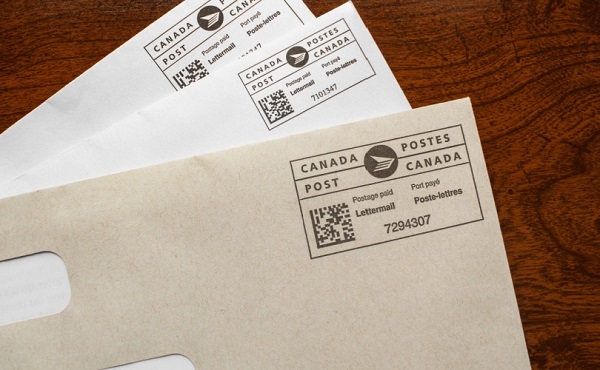Great Reset
From Border Security to Big Brother: Social Media Surveillance

 By Christina Maas
By Christina Maas
Was the entire immigration reform rhetoric just a prelude to broadening government spying?
Let’s take a closer look: immigration became a hot-button campaign issue, with plenty of talk about “welcoming” migrants, combined with a healthy dose of hand-wringing about border security. Now, however, critics are uncovering what looks like the real priority—an enhanced federal surveillance operation aimed at monitoring not just new arrivals, but American citizens too. In the name of keeping tabs on who’s coming and going, the administration sank more than $100 million into a social media surveillance system designed to keep an eye on everyone.
The Department of Homeland Security (DHS) first flirted with these powers under Trump’s presidency, when ICE officials began monitoring social media under the guise of protecting the homeland. The Biden-Harris administration, having previously expressed horror at Trump-era excesses, took a softer tack, but actually increased mass surveillance. They rebranded the initiative as the Visa Lifecycle Vetting Initiative (VLVI), a name that practically exudes bureaucratic charm while implying a methodical, visa-centric approach. But if it was just an immigration program, why was it scanning communications between Americans and their international friends, family, or business contacts?
According to a lawsuit from the Electronic Frontier Foundation (EFF), the program evolved into something much larger than a mere visa vetting system. The scheme entailed broad surveillance of communications and social media activity, conveniently sidestepping pesky things like “probable cause” or the First Amendment. “Government officials peering through their correspondence with colleagues visiting from overseas and scrutinizing the opinions expressed in their communications and their work,” read a lawsuit that laid bare the VLVI’s invasive nature. What started as a system to vet foreigners’ eligibility to enter the U.S. quietly metastasized into an excuse to monitor anyone who dared connect across borders.
We obtained a copy of the lawsuit for you here.
We obtained a copy of documents batch one for you here.
We obtained a copy of documents batch two for you here.
Of course, in true Washington style, this story wouldn’t be complete without a twist of political theater. The administration’s rhetoric has leaned heavily on a supposed dedication to protecting civil rights and personal freedoms—while simultaneously doubling down on programs that do the opposite.
A Little Privacy, Please? DHS Puts American Social Media on the Watchlist
Ah, the Fourth Amendment — one of those quaint, old-timey Constitutional protections that grant Americans the basic human right not to be poked, prodded, or probed by their own government without a solid reason. It’s a promise that Washington will think twice before sifting through your life without a warrant. Yet somehow, in the age of social media, this Fourth Amendment right seems to be slipping into the hazy realm of memory, particularly when it comes to Uncle Sam’s latest pastime: keeping tabs on everyone’s online chatter under the banner of immigration vetting.
Welcome to the VLVI, a Homeland Security special that appears to have mistaken “security” for “surveillance.” This bureaucratic marvel was dreamed up as a means to monitor non-citizens and immigrants, ostensibly for national security. But according to recent lawsuits, it’s not just foreigners on the watchlist—average Americans now get to share the surveillance limelight too, all thanks to the Department of Homeland Security’s fondness for “indiscriminate monitoring” of citizen communications. And why? Because in the brave new world of VLVI, any American chatting online with an overseas connection might just be suspicious enough to keep an eye on.
A Sweeping “Security” Measure or Just Mass Surveillance?
Here’s where the Constitution starts to feel like an afterthought. Traditionally, the government can’t simply jump into your emails, texts, or online rants without a warrant backed by probable cause. The Fourth Amendment makes that pretty clear. But in the VLVI’s playbook, this notion of “probable cause” becomes something of a suggestion, more of a “nice to have” than a constitutional mandate. Instead, they’ve embraced an approach that’s less “laser-focused security effort” and more “catch-all dragnet,” casting wide nets over American citizens who happen to connect with anyone abroad—no illegal activity necessary.
Imagine you’re a US citizen messaging your friend in France about a summer trip, or maybe you’re just exchanging memes with a cousin in Pakistan. Under this initiative, that simple exchange could land you in a Homeland Security database, your innocent messages cataloged alongside the truly suspicious characters of the internet. And this is happening without any individual warrants, without specific suspicion, and in some cases, without probable cause. One might ask, exactly how does that square with the Constitution’s protections?
Privacy Protections? That’s for Other People
This is all a question of government trust and hypocrisy. The program began under a previous administration but was quickly shuttled along by the current one, despite its public stance championing privacy rights. There’s something ironic about politicians who rally for civil liberties in campaign speeches, only to maintain and expand government surveillance in office. The backlash has been predictably loud, and for good reason. Here we have a policy that effectively treats every social media user as a latent threat and a government that somehow expects people to swallow this as reasonable.
Critics have slammed this “watch-all” approach, pointing out that it doesn’t take a legal scholar to see how this might just cross a constitutional line or two. It’s not just Americans with foreign friends who are worried—it’s anyone who believes the government shouldn’t rummage through citizens’ lives without cause. “This type of program, where citizens’ digital lives are surveilled under a sweeping policy without individual warrants or specific reasons, sounds like an unreasonable search,” privacy advocates say.
The Price of a Free Society: Now With Less Freedom
Of course, VLVI supporters wave away these concerns with a dismissive “it’s for security” mantra as if that excuse covers every constitutional breach. And true, there’s little doubt that some level of monitoring is necessary to keep the truly dangerous elements out of the country. But we’re talking about ordinary people here, law-abiding citizens getting swept up in a bureaucratic machine that fails to distinguish between a casual chat and a credible threat.
When the government can tap into anyone’s social media profile because of a flimsy association, what’s left of the citizen’s “reasonable expectation of privacy”? In theory, the Fourth Amendment protects it; in practice, programs like VLVI gnaw away at it, one seemingly “harmless” violation at a time. If we keep pretending this is just another harmless tool in the security toolkit, we might as well hang up any remaining illusions about the privacy rights we’re supposedly guaranteed.
Just Another Step Toward a Surveillance State?
For Americans, it’s a chilling reminder that a swipe on Instagram or a chat on Facebook can mean more than just casual social interaction. For the DHS, it seems the message is clear: treat everyone as a suspect first, and figure out the legalities later. What happens to the expectation of privacy for ordinary Americans? It’s probably time we all start looking over our digital shoulders, because in the world of VLVI, “reasonableness” is a government privilege, not a citizen’s right.
Censorship Industrial Complex
Alberta senator wants to revive lapsed Trudeau internet censorship bill

From LifeSiteNews
Senator Kristopher Wells and other senators are ‘interested’ in reviving the controversial Online Harms Act legislation that was abandoned after the election call.
A recent Trudeau-appointed Canadian senator said that he and other “interested senators” want the current Liberal government of Prime Minister Mark Carney to revive a controversial Trudeau-era internet censorship bill that lapsed.
Kristopher Wells, appointed by former Prime Minister Justin Trudeau last year as a senator from Alberta, made the comments about reviving an internet censorship bill recently in the Senate.
“In the last Parliament, the government proposed important changes to the Criminal Code of Canada designed to strengthen penalties for hate crime offences,” he said of Bill C-63 that lapsed earlier this year after the federal election was called.
Bill C-63, or the Online Harms Act, was put forth under the guise of protecting children from exploitation online.
While protecting children is indeed a duty of the state, the bill included several measures that targeted vaguely defined “hate speech” infractions involving race, gender, and religion, among other categories. The proposal was thus blasted by many legal experts.
The Online Harms Act would have in essence censored legal internet content that the government thought “likely to foment detestation or vilification of an individual or group.” It would be up to the Canadian Human Rights Commission to investigate complaints.
Wells said that “Bill C-63 did not come to a vote in the other place and in the dying days of the last Parliament the government signaled it would be prioritizing other aspects of the bill.”
“I believe Canada must get tougher on hate and send a clear and unequivocal message that hate and extremism will never be tolerated in this country no matter who it targets,” he said.
Carney, as reported by LifeSiteNews, vowed to continue in Trudeau’s footsteps, promising even more legislation to crack down on lawful internet content.
Before the April 28 election call, the Liberals were pushing Bill C-63.
Wells asked if the current Carney government remains “committed to tabling legislation that will amend the Criminal Code as proposed in the previous Bill C-63 and will it commit to working with interested senators and community stakeholders to make the changes needed to ensure this important legislation is passed?”
Seasoned Senator Marc Gold replied that he is not in “a position to speculate” on whether a new bill would be brought forward.
Before Bill C-63, a similar law, Bill C-36, lapsed in 2021 due to that year’s general election.
As noted by LifeSiteNews, Wells has in the past advocated for closing Christian schools that refuse to violate their religious principles by accepting so-called Gay-Straight Alliance Clubs and spearheaded so-called “conversion therapy bans.”
Other internet censorship bills that have become law have yet to be fully implemented.
Last month, LifeSiteNews reported that former Minister of Environment Steven Guilbeault, known for his radical climate views, will be the person in charge of implementing Bill C-11, a controversial bill passed in 2023 that aims to censor legal internet content in Canada.
Censorship Industrial Complex
Conservatives slam Liberal bill to allow police to search through Canadians’ mail

From LifeSiteNews
Conservatives are warning that the Liberals’ new border bill will allow police to search Canadians’ mail.
During a June 5 debate in the House of Commons, Conservative Member of Parliament (MP) Frank Caputo voiced concerns over Bill C-2, the Strong Borders Act, which will permit police and government officials to open and examine Canadians’ mail.
“This is something I know I am going to get mail about,” Caputo said. “We are now talking about language in the Charter, what is referred to as an expectation of privacy.”
Bill C-2, introduced by the Liberals under Prime Minister Mark Carney, is framed as legislation to combat drugs making their way across the border. However, many have pointed out that it severely infringes on Canadians’ Charter rights.
The Liberals have failed to address this concern in their 130-page legislation, leading Conservatives to demand accountability.
“If they can put out a 130-page bill, certainly they can put out a four or five-page Charter statement,” he said. “Certainly, somebody in the government asked if it was Charter compliant — but they won’t say.”
Under Bill C-2, Canada would amend the Canada Post Corporation Act to “remove barriers that prevent police from searching mail, where authorized to do so in accordance with an Act of Parliament, to carry out a criminal investigation.”
It also seeks to “expand Canada Post inspection authority to open mail.”
As LifeSiteNews previously reported, legal organizations have warned that the legislation could lead to a cashless economy as it would ban cash payments over $10,000.
“Part 11 amends the Proceeds of Crime (Money Laundering) and Terrorist Financing Act to prohibit certain entities from accepting cash deposits from third parties and certain persons or entities from accepting cash payments, donations or deposits of $10,000 or more,” the legislation proposes.
In a June 4 X post, the Justice Centre for Constitutional Freedoms (JCCF) warned that “If Bill C-2 passes, it will become a Criminal Code offence for businesses, professionals, and charities to accept cash donations, deposits, or payments of $10,000 or more. Even if the $10,000 payment or donation is broken down into several smaller cash transactions, it will still be a crime for a business or charity to receive it.”
The JCCF pointed out that while cash payments of $10,000 are not common for Canadians, the government can easily reduce “the legal amount to $5,000, then $1,000, then $100, and eventually nothing.”
“Restricting the use of cash is a dangerous step towards tyranny and totalitarianism,” the organization warned. “Cash gives citizens privacy, autonomy, and freedom from surveillance by government and by banks, credit card companies, and other corporations.”
Similarly, Carney’s move to restrict Canadians is hardly surprising considering his close ties to the World Economic Forum and push for digital currency.
In a 2021 article, the National Post noted that “since the advent of the COVID pandemic, Carney has been front and centre in the promotion of a political agenda known as the ‘Great Reset,’ or the ‘Green New Deal,’ or ‘Building Back Better.’
“Carney’s Brave New World will be one of severely constrained choice, less flying, less meat, more inconvenience and more poverty,” the outlet continued.
In light of Carney’s new leadership over Canadians, many are sounding alarm over his distinctly anti-freedom ideas.
Carney, who as reported by LifeSiteNews, has admitted he is an “elitist” and a “globalist.” Just recently, he criticized U.S. President Donald Trump for targeting woke ideology and has vowed to promote “inclusiveness” in Canada.
Carney also said that he is willing to use all government powers, including “emergency powers,” to enforce his energy plan.
-

 Business2 days ago
Business2 days agoEU investigates major pornographic site over failure to protect children
-

 Canadian Energy Centre2 days ago
Canadian Energy Centre2 days agoCross-Canada economic benefits of the proposed Northern Gateway Pipeline project
-

 Alberta2 days ago
Alberta2 days agoAlbertans need clarity on prime minister’s incoherent energy policy
-

 Economy2 days ago
Economy2 days agoCarney’s Promise of Expediting Resource Projects Feels Like a Modern Version of the Wicked Stepmother from Disney’s Cinderella
-

 conflict18 hours ago
conflict18 hours ago“Evacuate”: Netanyahu Warns Tehran as Israel Expands Strikes on Iran’s Military Command
-

 Health22 hours ago
Health22 hours agoLast day and last chance to win this dream home! Support the 2025 Red Deer Hospital Lottery before midnight!
-

 Energy18 hours ago
Energy18 hours agoCould the G7 Summit in Alberta be a historic moment for Canadian energy?
-

 Alberta1 day ago
Alberta1 day agoAlberta’s grand bargain with Canada includes a new pipeline to Prince Rupert






